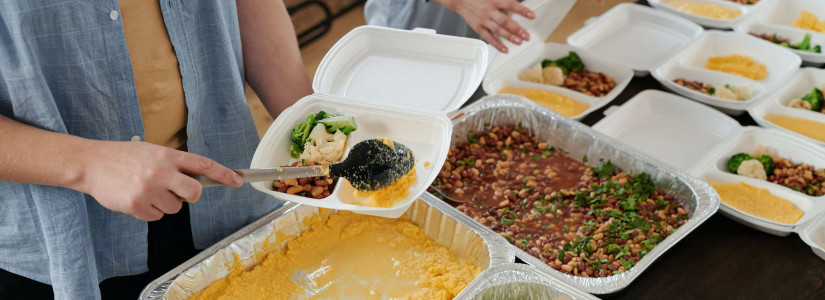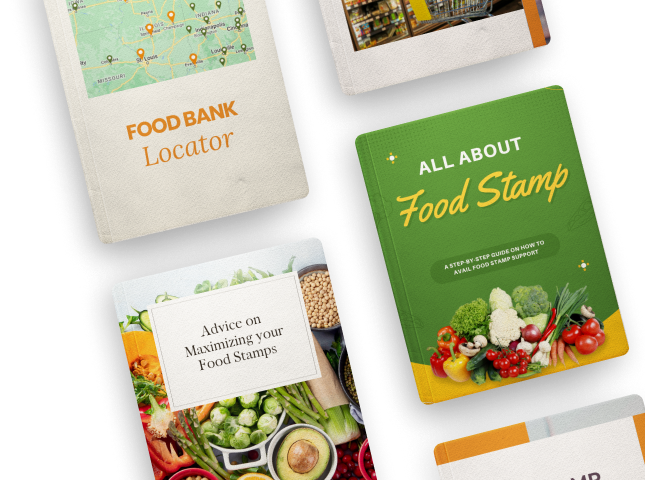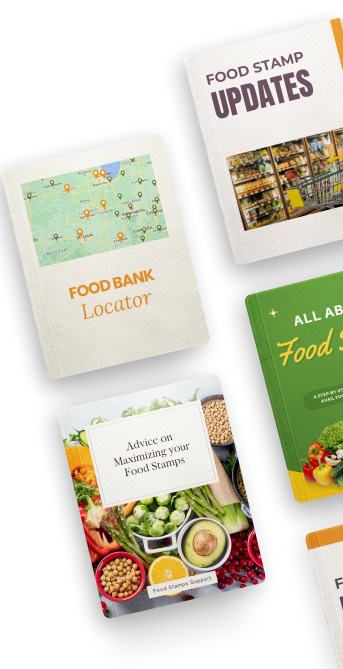What is SNAP (Supplemental Nutrition Assistance Program) and How to Qualify
Food assistance programs have a long history in the United States going back to 1939 with the creation of the FSP program in New York. The Supplemental Nutrition Assistance Program or SNAP began in 1961 with the Food Stamp Act to distribute food assistance nationwide. The program has changed in many ways over the last 50+ years and the benefits are no longer referred to as "food stamps," but the concept of the program remains the same: helping low-income families afford nutritional food.
How Does SNAP Work?
The SNAP program is a federal nutrition program that helps low-income individuals and families buy healthy food. SNAP benefits are delivered to recipients in the form of an EBT card much like a debit card that can be used to access the SNAP balance at authorized food vendors. Benefits are automatically deposited into your SNAP EBT account every month that you remain eligible and the balance can be used through the card when you check out at the register.
What Can I Buy With SNAP?
SNAP benefits may only be used for qualifying food as well as seeds or plants to grow food. Sales tax is not added to items purchased with SNAP benefits. Items that cannot be purchased with your SNAP benefits include:
- Hot food
- Food that is eaten in the store
- Medicine and vitamins
- Tobacco and alcoholic products
- Nonfood items such as toothpaste, personal items, toilet paper, and pet food
How Much Do I Receive in SNAP Benefits?
The amount of benefits you can receive through the SNAP program is based on the Department of Agriculture's Thrifty Food Plan, which estimates the cost to buy food to prepare low-cost, nutritious meals at home. If your household meets the eligibility guidelines, your benefits will be based on the number of household members and how much of your monthly income is remaining after allowed expenses.
Qualifying for SNAP
There are a few basic eligibility guidelines you must meet to be eligible for SNAP benefits:
- Able-bodied adults aged 16 through 60 must register for work, accept a suitable work offer, and take part in an employment training program. Able-bodied adults between 18 and 50 who do not have children and aren't pregnant can only receive SNAP benefits for 3 months within a 3-year window unless they are working or participating in a job or workfare program.
- Able-bodied students between 18 and 49 who are enrolled at least half time in a higher education institution are usually not eligible for SNAP benefits except with exceptions like working 20+ hours a week or caring for a dependent under 6.
- Households can have up to $2,250 in countable resources like a bank account or $3,250 in countable resources if a household member is 60+ years old or disabled. Not all resources are counted, including a home, retirement plans, and the resources of people receiving TANF or SSI.
- All forms of income are generally counted toward eligibility. In general, the household's gross income cannot exceed 130% of the poverty level. There are several deductions allowed, including child support and dependent care.
There are many exceptions provided to these eligibility guidelines for the elderly and disabled. Under the SNAP guidelines, an elderly person is defined as someone at least 60 years old. The disabled guidelines are also broad. Someone is considered disabled if they receive disability retirement benefits from a government agency and qualify for Medicare, receive federal disability or blindness benefits, are permanently housebound or require regular assistance, or are a disabled veteran.
Applying for SNAP Benefits
You can apply for SNAP benefits by visiting your visiting your local SNAP office. State and county SNAP offices accept applications, but you can also apply online in most states, including California, New York, Ohio, Texas, Washington, and Nevada.
You will generally apply as an entire household and have an in-person interview to verify your information and provide documentation to prove certain aspects of your application, including your income and assets. You will usually need to provide bills or other forms of proof for dependent care costs, child support payments, mortgage or rent payments, utilities, and medical expenses.
How Does SNAP Work?
The SNAP program is a federal nutrition program that helps low-income individuals and families buy healthy food. SNAP benefits are delivered to recipients in the form of an EBT card much like a debit card that can be used to access the SNAP balance at authorized food vendors. Benefits are automatically deposited into your SNAP EBT account every month that you remain eligible and the balance can be used through the card when you check out at the register.
What Can I Buy With SNAP?
SNAP benefits may only be used for qualifying food as well as seeds or plants to grow food. Sales tax is not added to items purchased with SNAP benefits. Items that cannot be purchased with your SNAP benefits include:
- Hot food
- Food that is eaten in the store
- Medicine and vitamins
- Tobacco and alcoholic products
- Nonfood items such as toothpaste, personal items, toilet paper, and pet food
How Much Do I Receive in SNAP Benefits?
The amount of benefits you can receive through the SNAP program is based on the Department of Agriculture's Thrifty Food Plan, which estimates the cost to buy food to prepare low-cost, nutritious meals at home. If your household meets the eligibility guidelines, your benefits will be based on the number of household members and how much of your monthly income is remaining after allowed expenses.
Qualifying for SNAP
There are a few basic eligibility guidelines you must meet to be eligible for SNAP benefits:
- Able-bodied adults aged 16 through 60 must register for work, accept a suitable work offer, and take part in an employment training program. Able-bodied adults between 18 and 50 who do not have children and aren't pregnant can only receive SNAP benefits for 3 months within a 3-year window unless they are working or participating in a job or workfare program.
- Able-bodied students between 18 and 49 who are enrolled at least half time in a higher education institution are usually not eligible for SNAP benefits except with exceptions like working 20+ hours a week or caring for a dependent under 6.
- Households can have up to $2,250 in countable resources like a bank account or $3,250 in countable resources if a household member is 60+ years old or disabled. Not all resources are counted, including a home, retirement plans, and the resources of people receiving TANF or SSI.
- All forms of income are generally counted toward eligibility. In general, the household's gross income cannot exceed 130% of the poverty level. There are several deductions allowed, including child support and dependent care.
There are many exceptions provided to these eligibility guidelines for the elderly and disabled. Under the SNAP guidelines, an elderly person is defined as someone at least 60 years old. The disabled guidelines are also broad. Someone is considered disabled if they receive disability retirement benefits from a government agency and qualify for Medicare, receive federal disability or blindness benefits, are permanently housebound or require regular assistance, or are a disabled veteran.
Applying for SNAP Benefits
You can apply for SNAP benefits by visiting your visiting your local SNAP office. State and county SNAP offices accept applications, but you can also apply online in most states, including California, New York, Ohio, Texas, Washington, and Nevada.
You will generally apply as an entire household and have an in-person interview to verify your information and provide documentation to prove certain aspects of your application, including your income and assets. You will usually need to provide bills or other forms of proof for dependent care costs, child support payments, mortgage or rent payments, utilities, and medical expenses.












